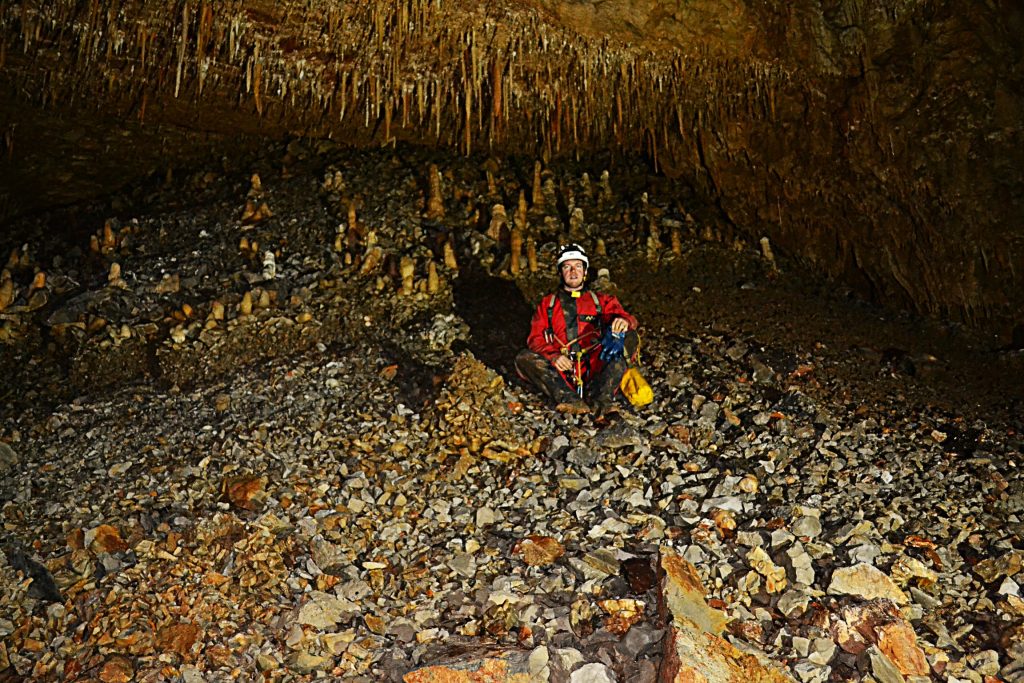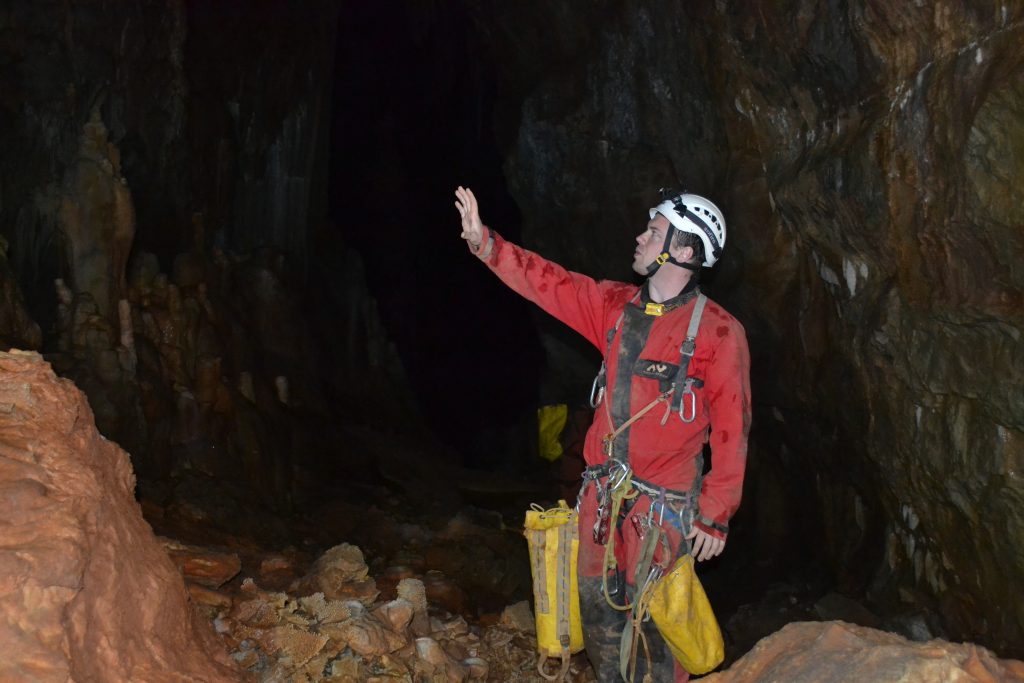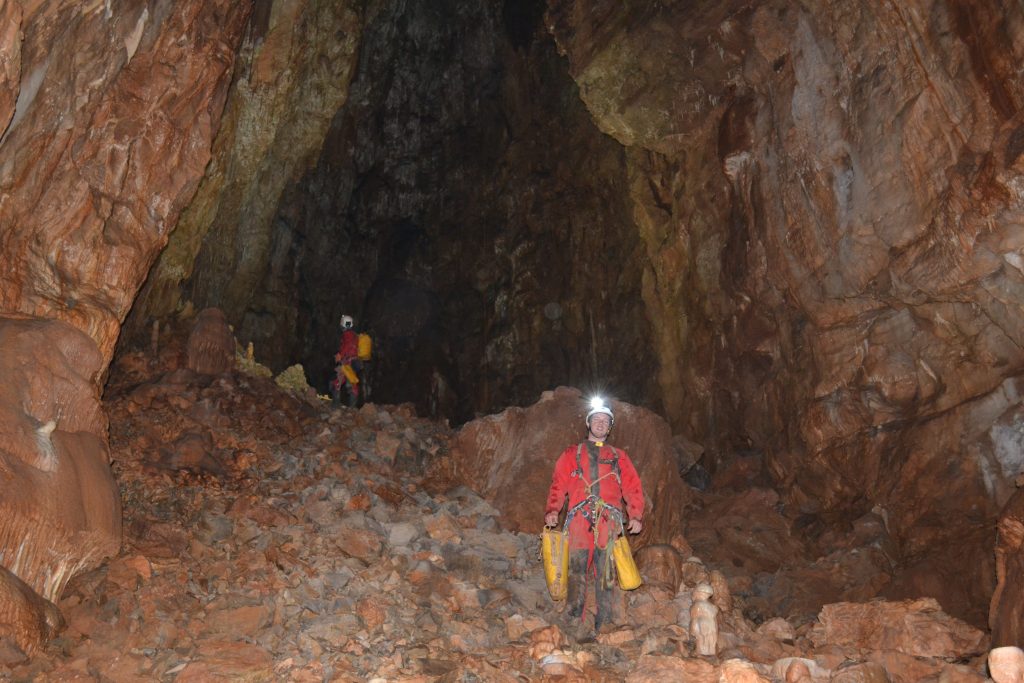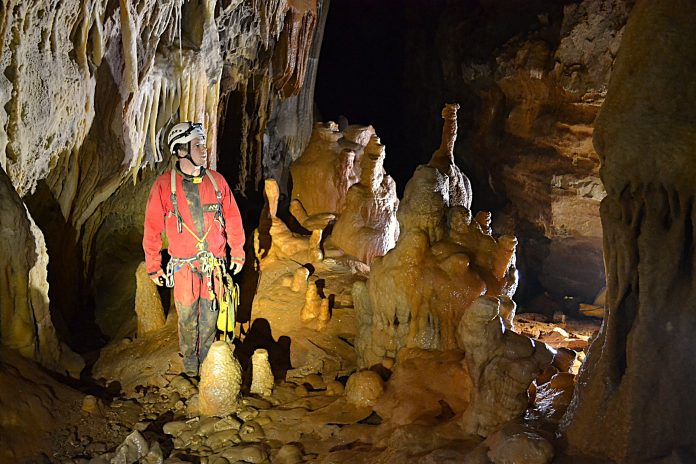by Alessandra Ressa
In the heart of the Karst region, on the border between Slovenia and Italy, in Orlek, near Trieste, nature has revealed a new underground secret. Matej Husu, a Slovenian speleologist, recently discovered Matej’s Cave (Matejeva Jama), one of the most significant cave findings in the last two decades. The cave, one of the biggest in our Carso, runs significantly under Italian soil, thus sparking a debate on further exploration. We spoke to him about his life, his passion for caves, and what drives him to keep exploring the hidden depths of the Earth.

Tell us a bit about yourself—how old are you, what do you do, and where did you grow up?
I’m 30 years old and I work for a road construction company. My job isn’t related to my hobby, but I live in the village of Orlek, which I truly love. We’re close to nature, the sea, and even the big city of Trieste. I really enjoy spending time outdoors, and that’s how I fell in love with speleology. Caves are literally just 100 meters from my house.
How long have you been interested in speleology, and which club do you belong to?
I’ve been involved with caving since I was a child. My father, Ludvik Husu, has been a caver for over 50 years. When I was little, he used to take me to caving meetings with him. I’ve been a member of the Sežana Caving Club since 2014.

Was this the first time you discovered a cave?
No, I’ve discovered around 30 caves so far, although I don’t know the exact number. Two of them are particularly important to me. The most recent one is Matej’s Cave, located near the border. It’s a special cave with beautiful stalactite formations. Its entrance is in Slovenia, but two-thirds of the cave extends into Italy. It features a massive passage carved by an underground river, and it opens into an enormous chamber about 90 meters long, 40 meters wide, and at least 100 meters high. I say “at least” because our measuring device only goes up to 100 meters. We know it’s no less than that, but we still don’t know its full height.
The second significant discovery was in 2022, in Huslova Pečina. There, I found a continuation of the cave with paleontological remains. Experts later confirmed that the bones belonged to a steppe bison and were around 30,000 years old, making it an important paleontological site.

What did you feel when you realized the cave was so large?
When we enlarged the entrance, a powerful draft started blowing from the cave. The exchange of warm and cold air was intense—you could feel the wind on your face and even see the grass moving. It felt like our famous local wind, the bora. That moment gave me hope that we had stumbled upon something truly significant.
What was it like to step into a place where no one had ever set foot before?
I felt pure joy and happiness. It’s an incredible feeling to be the first person in such a place.
What does speleology mean to you?
For me, caving is a hobby I do for the soul and heart. I simply love being in nature and exploring. It gives me peace and excitement at the same time.
Slovenia has introduced several restrictions on cave access. Why is it important to protect these underground environments?
Caves are delicate ecosystems. Once they are disturbed, it’s hard—sometimes impossible—to restore them. They preserve unique natural, geological, and even archaeological heritage. Protecting them means preserving a part of our planet’s deep history.
Caves are considered the last frontier on Earth. What drives speleologists to seek out new caves? What can each discovery teach us?
The unknown is what drives us. Every new cave is a mystery waiting to be uncovered. They can teach us about the Earth’s history, climate changes, ancient life, and even how to better protect our environment. Caving is not just about adventure—it’s about learning, preserving, and connecting with a world few have seen.





























